#Thomas Cranmer
Text
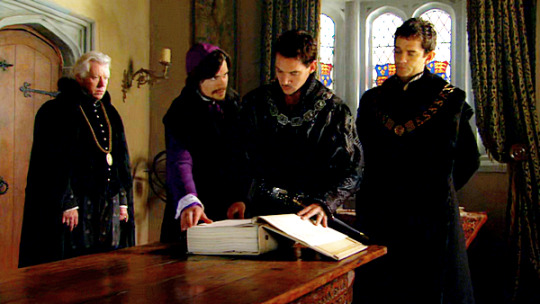

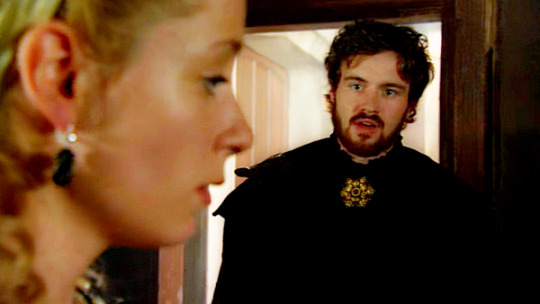




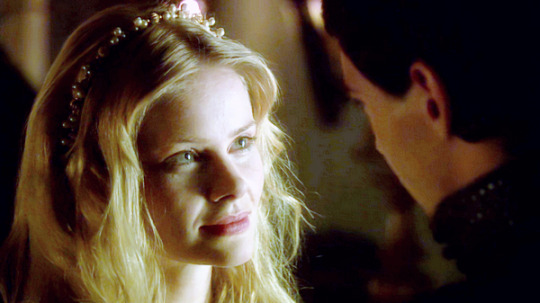
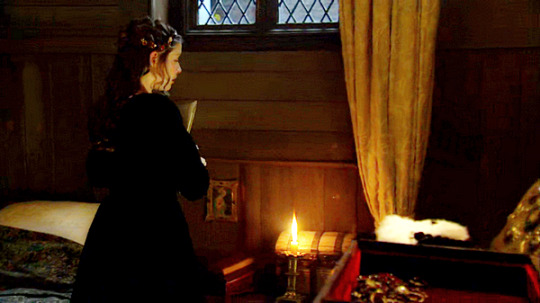
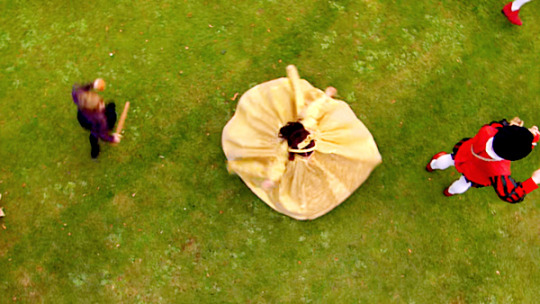
⚜♛ @thetudorsgifs: THE TUDORS WEEK ♛⚜
Day One - Best Episode:
Season Two, Episode Seven - Matters of State
#the tudors#thetudorsedit#thetudorsweek2023#perioddramaedit#nick dunning#hans matheson#jonathan rhys meyers#james frain#natalie dormer#krystin pellerin#jamie thomas king#henry cavill#maria doyle kennedy#anita briem#sarah bolger#my edits#thomas boleyn#thomas cranmer#henry viii#thomas cromwell#anne boleyn#elizabeth darrell#thomas wyatt#katherine of aragon#jane seymour#mary i#caps#tudorscaps
100 notes
·
View notes
Text
thomas cranmer leading the investigation into katherine howard's sexual relationships from the ages of c.12-17, and settling on executing katherine
#henry manox walking free is why i am glad mary barbecue'd cranmer <3#thomas cranmer#katherine howard
19 notes
·
View notes
Text

Anne Boleyn, prisoner in the Tower of London, confides in the Archbishop of Canterbury copy of a painting by Melina Thomas
#I think the og is lost#or in a private collection#anne boleyn#thomas cranmer#art#Melina Thomas#art history
19 notes
·
View notes
Text



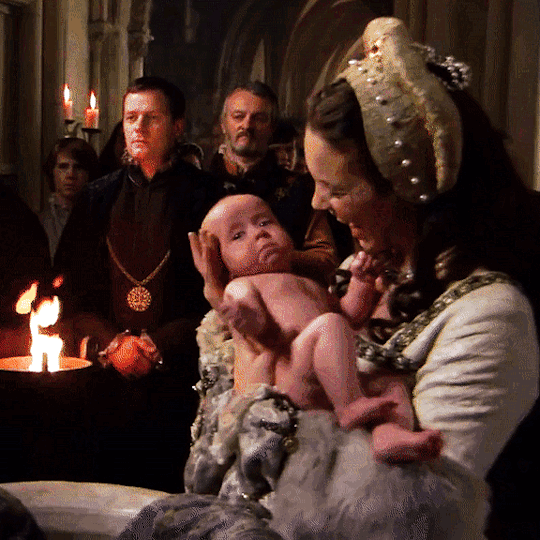
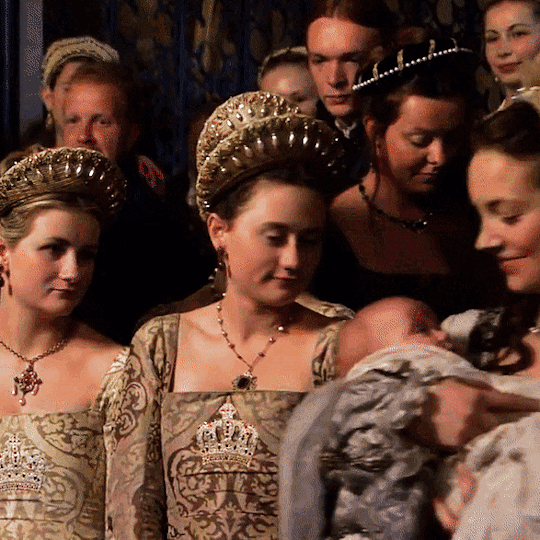

The Tudors (2007-2010)
2.04 ‘The Act of Succession’
118 notes
·
View notes
Photo

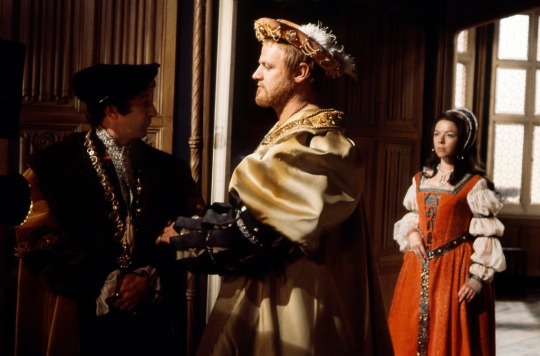

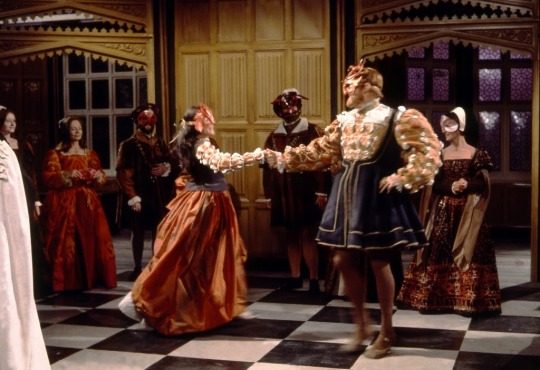
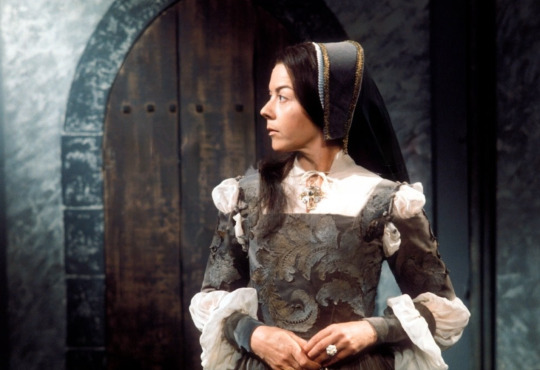

Dorothy Tutin as Anne Boleyn in The Six Wives of Henry VIII (1970)
edited by me; apologies for any remaining artifacts! I’ve tried to get rid of them all but it’s still somewhat visible in the first picture
First two pics are from episode 1 (”Catherine of Aragon”, written by Rosemary Anne Sisson); the rest are from episode 2 (”Anne Boleyn”, written by Nick Mccarty). Henry VIII was played by Keith Michell, Eustace Chapuys (in the second picture) by Edward Atienza, and Thomas Cranmer (in the last picture) by Bernard Hepton.
#tudor era#anne boleyn#dorothy tutin#the six wives of henry viii#henry viii#keith michell#eustace chapuys#edward atienza#thomas cranmer#bernard hepton#love this anne depiction so much#so lucky to have found this trove of pics a few days ago#dm me if you want access to the collection
50 notes
·
View notes
Text

#william tyndale#thomas cranmer#thomas cromwell#henry viii#tudor memes#history memes#reformation memes#they really just copy pasted tyndale into the new bible and he didnt fuckign notice RIP
60 notes
·
View notes
Text
51 notes
·
View notes
Text

On 19 May 1536, Anne was beheaded on Tower Green. She protested her innocence until the last.
On 16 May, he saw Anne in the Tower and heard her confession and the following day, he pronounced the marriage null and void. Two days later, Anne was executed; Cranmer was one of the few who publicly mourned her death. The vicegerency brought the pace of reforms under the control of the king.
#thomascranmer#anneboleyn
5 notes
·
View notes
Text
Anne Boleyn's fall was due, in part, to her opposition to the first round of the confiscation of monastic lands. In later years, the men she had sponsored pressed forward with the same agenda, to partial success. Every time another round of intercessory institutions was closed, the evangelical reformers pleaded for their preservation in a renewed guise, as new charitable bodies that would balance the relief of the poor with the distribution of the Word. Latimer aspired to the same fundamental ideal that Cranmer had hoped to achieve when Canterbury was refounded: to provide every leading market-town and chief place with a university-in-miniature, staffed with godly divines who would devote their lives to preaching and training the rising generation of students.
Preaching During the English Reformation, Susan Wabuda
4 notes
·
View notes
Text

Image I.D. — “Dead, he thinks, the father long dead: still looking for his hand in the dark.” — End I.D.
I imagine that if Cranmer was younger and/or less established in the world, book!Cromwell would’ve added him to his brood.
5 notes
·
View notes
Text

#christianposts#dailydevotion#christian living#theology#daily devotional#faith#christianity#scripture#christian quotes#bibleverse#thomas cranmer#gods word#bible reading
4 notes
·
View notes
Text






⚜♛ @thetudorsgifs: THE TUDORS WEEK ♛⚜
Day Six - Most Underrated Character:
Thomas Cranmer, Archbishop of Canterbury
34 notes
·
View notes
Text
Why was everyone and their third cousin called Thomas in the 16th century?
#tudors#tudor era#tudor period#tudor england#tudor history#This bloody name#We've already gone through like four Thomas#And we've just gotten to the break with rome#We have Thomas wolsey#Thomas Cromwell#Thomas more#Thomas cranmer#Like bloody hell#Were they really this uncreative#There's probably going to be more#😭#help
6 notes
·
View notes
Text
Idk why, but I become filled with rage every time I think about Thomas Cranmer
2 notes
·
View notes
Text
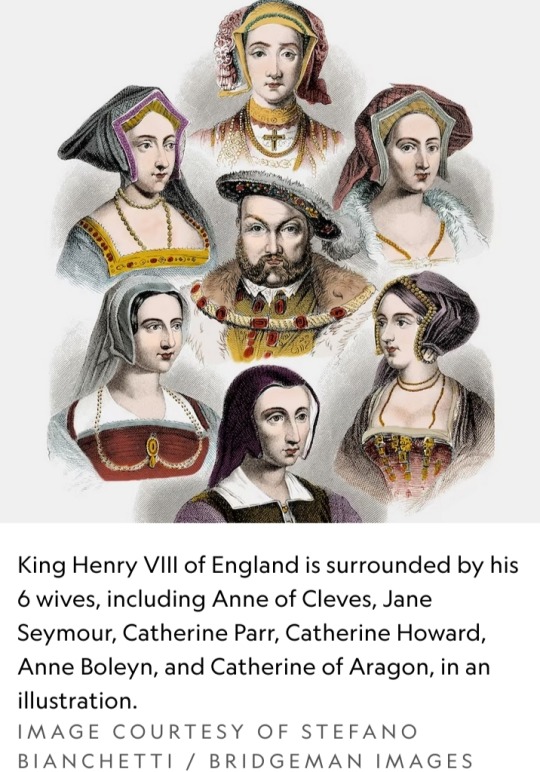

Authors Toby Marlow and Lucy Moss found inspiration for their hit musical in the lives and loves of King Henry VIII, but SIX tells the story from the women’s point of view.
Each queen gets her moment in the spotlight to explain her fate of being “Divorced. Beheaded. Died. Divorced. Beheaded. Survived.”
Divorced: Catherine of Aragon
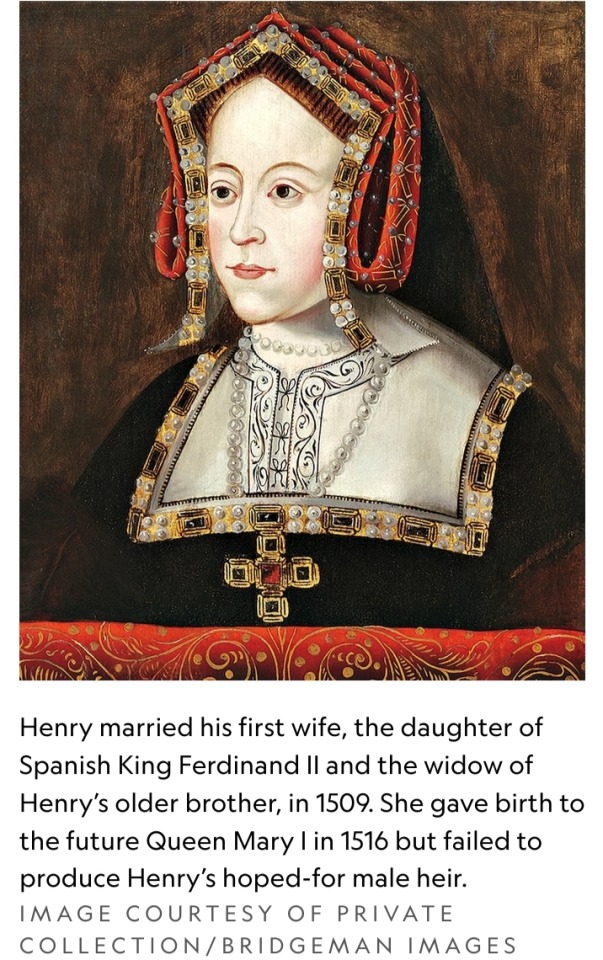
Larger-than-life Henry VIII ruled England for 36 years (1509-1547), raging war against France and Scotland, separating from the Catholic Church, and paving the way for the constitution of England, among other political achievements.
But young Prince Henry was not destined to be king. When his older brother Arthur died in 1502 at age 15, Henry became the heir to the throne.
When Arthur died, Henry didn’t just inherit the throne—he inherited his brother’s fiancée, Catherine of Aragon.
After marrying, the two became parents to a son—who tragically died two months later.
Their daughter Mary was born in 1516, but by 1526, the marriage had not produced the male heir Henry needed to secure the succession.
He began looking for a new bride, even though the Catholic Church made it impossible to divorce Catherine.
In the end, the answer was simple:
Henry believed he was a king ordained by God, so he, not the pope, had ultimate authority over his kingdom; as such, he could grant his own annulment.
This decision led to England’s break with the Catholic Church—and the creation of the Anglican Church.
After their annulment, Catherine was given the title “Dowager Duchess of Wales,” and she lived out her days at Kimbolton Castle. She died in 1536 from cancer at the age of 50.
Mary, by the way, went on to become Queen of England and Ireland from 1553 to 1558, during which time she fought to reverse the English Reformation, brought about during her father’s reign.
Beheaded: Anne Boleyn
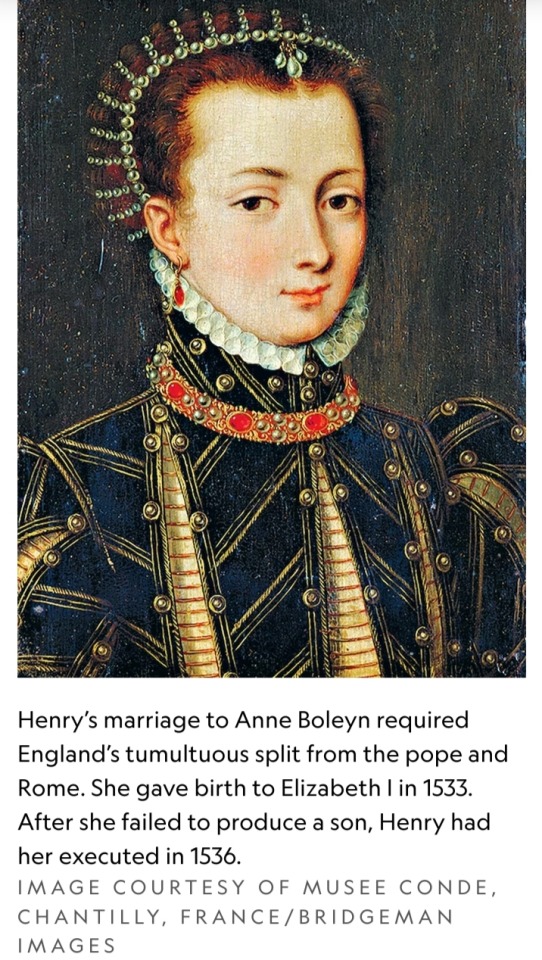
While still married to Catherine, Henry had begun wooing a court beauty, Anne Boleyn, and was determined to marry her.
A lady-in-waiting to Catherine, Anne was sophisticated, charming, and confident.
She is commonly believed to be the wife he loved the most.
As his advisers worked on “the King’s great matter” of the divorce, the couple had to wait seven years to be married—though the two flaunted their relationship in court.
He wrote her love letters, which still exist today:
“I hope soon to see you again,” he wrote, “which will be to me a greater comfort than all the precious jewels in the world.”
Anne was six months pregnant when they finally said “I do” in June 1533. Three months later, she gave birth to Elizabeth I.
She had two stillborn children and suffered a miscarriage in 1536; the fetus appeared to be male. Henry still did not have his heir.
Little by little, Henry grew tired of Anne, and his eye caught sight of a new woman: Jane Seymour.
To end the marriage, Henry needed to find a way out—and he found it through accusing Anne of high treason.
For the crimes of adultery, incest and plotting to murder the king, Anne was arrested and imprisoned in the Tower of London.
She went on trial, denied all charges, but was found guilty.
Anne was beheaded on 17 May 1536 at the Tower and buried in an unmarked grave beneath the Parish Church there.
Died: Jane Seymour

While married to Anne, Henry visited the Seymour home. It was believed that was when he first laid eyes on Jane, who served as a lady in waiting for both Catherine of Aragon and Anne Boleyn.
As in his relationship with Anne, Henry began courting Jane while still a married man.
Beautiful and reserved, she was a stark contrast to his first two wives. Before long, rumors of his attraction to her spread.
He proposed to her the day after Anne Boleyn’s execution, and they were married a month later.
She bore a son, the future Edward VI, in 1537 but died within 12 days of giving birth.
She is the only wife buried with him in the same tomb in St. George’s Chapel at Windsor Castle.
Divorced: Anne of Cleves
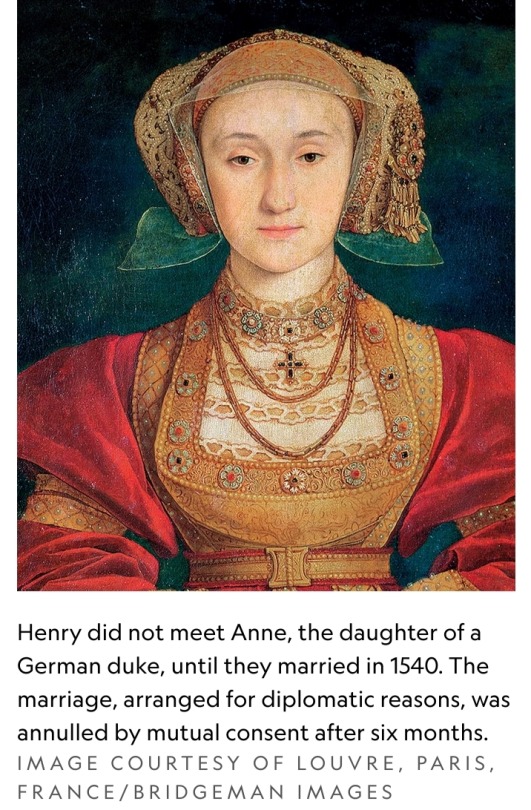
Henry’s ministers searched high and low for a new wife for the king, whose abysmal marital reputation preceded him.
Anne of Cleves, the daughter of a German duke, became a prospect for diplomatic reasons:
The marriage would ally England with a Protestant duchy, thus solidifying England’s religious reformation.
But Henry needed to know what she looked like, so, on the advice of Thomas Cromwell, he sent his favorite court painter, Hans Holbein the Younger, to the German duchy.
He approved based on the portrait.
When Anne arrived, however, he was crestfallen to see she was not as fair as reported.
(Remember, he was no great looker at that time of his life—obese, in chronic pain, with an unpredictable temper.)
Nevertheless, they were married at Greenwich Palace on 6 January 1540, but he was already looking for a way out.
The marriage was annulled six months later, on the technicality that it hadn’t been consummated.
She was given Hever Castle (Anne Boleyn’s former home) and the title “King’s Beloved Sister.”
Thomas Cromwell was not so fortunate; Henry had him executed for his miscalculation.
Beheaded: Catherine Howard

Henry was 49, and Catherine was 19 or 20, when he spotted her among the ladies in waiting to his previous wife, Anne of Cleves.
Vivacious and full of energy, the young Catherine had no choice in the matter. The pair married in 1540, three weeks after his separation with Anne.
She became his trophy wife.
No doubt turned off by her much older husband (who suffered from various ailments including ulcerous legs), she fell in love with Thomas Culpeper, one of Henry’s young advisers.
The Archbishop of Canterbury, Thomas Cranmer, found out, and he reported her indiscretions—including those that occurred before their marriage with other men—to Henry.
She was charged with “unchastity” before her marriage, concealing her indiscretions, and adultery: acts of treason.
She was executed on 13 February 1542.
Survived: Catherine Parr
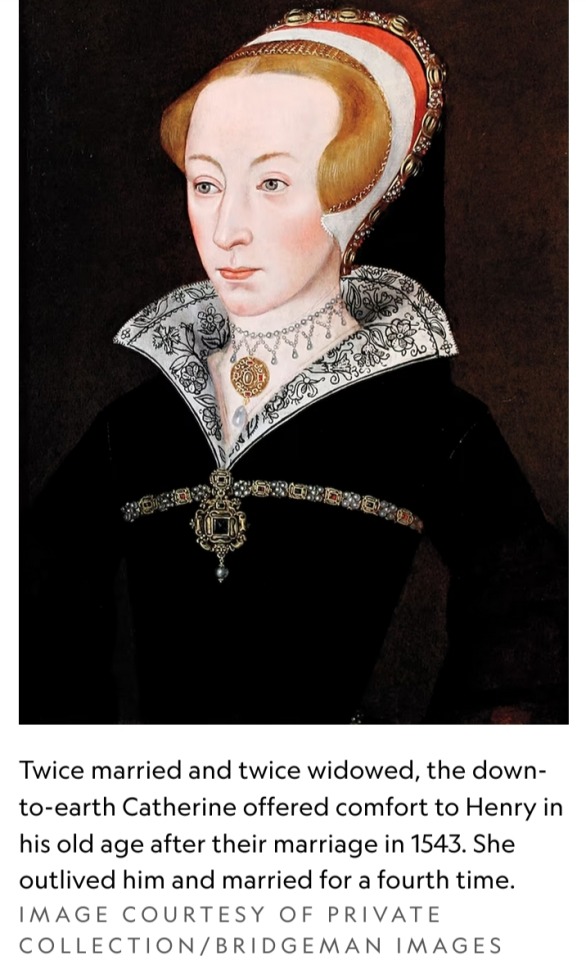
Twice married and twice widowed, the down-to-earth Catherine was reluctant at first to marry Henry. Who wouldn’t be?
She knew the fates of his previous wives, though she also knew that refusing the king could have drastic consequences.
She had caught his eye when she had been part of the household of Princess Mary, the king’s daughter.
They were married in 1543. By all reports, she was a loving, pious wife who offered comfort to Henry in his old age.
She helped Henry to reconcile with his two daughters, Mary and Elizabeth, and ensured they were educated and restored to succession.
She outlived him and married for a fourth time.
#King Henry VIII#Catherine of Aragon#Dowager Duchess of Wales#Anne Boleyn#Jane Seymour#Edward VI#Anne of Cleves#Thomas Cromwell#Hans Holbein the Younger#Thomas Cranmer#Catherine Howard#Catherine Parr#Mary Tudor#Mary I of England#Bloody Mary#Queen Elizabeth I#Queens of England#British Royal Family#King’s Beloved Sister
10 notes
·
View notes